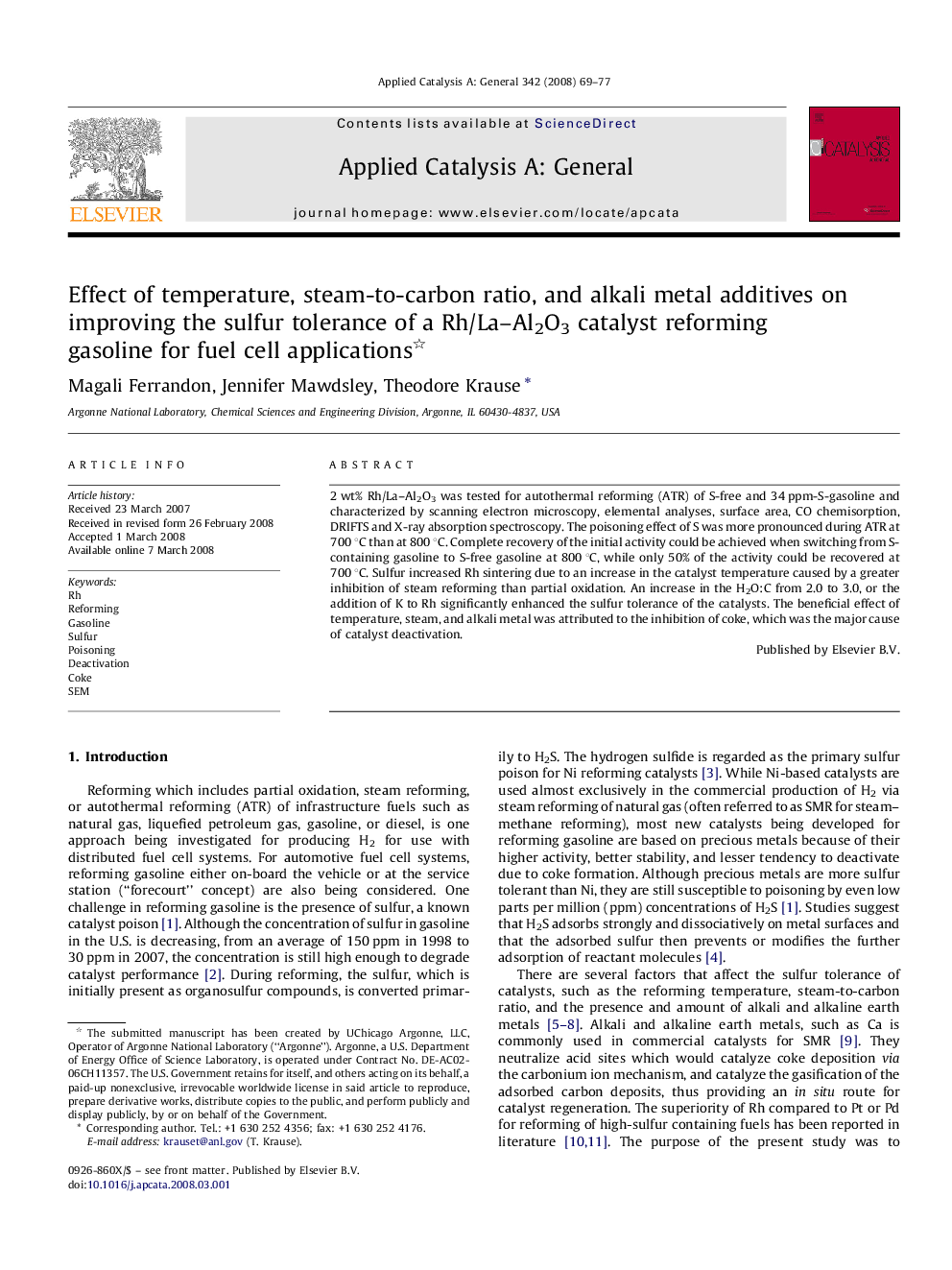| Article ID | Journal | Published Year | Pages | File Type |
|---|---|---|---|---|
| 43015 | Applied Catalysis A: General | 2008 | 9 Pages |
2 wt% Rh/La–Al2O3 was tested for autothermal reforming (ATR) of S-free and 34 ppm-S-gasoline and characterized by scanning electron microscopy, elemental analyses, surface area, CO chemisorption, DRIFTS and X-ray absorption spectroscopy. The poisoning effect of S was more pronounced during ATR at 700 °C than at 800 °C. Complete recovery of the initial activity could be achieved when switching from S-containing gasoline to S-free gasoline at 800 °C, while only 50% of the activity could be recovered at 700 °C. Sulfur increased Rh sintering due to an increase in the catalyst temperature caused by a greater inhibition of steam reforming than partial oxidation. An increase in the H2O:C from 2.0 to 3.0, or the addition of K to Rh significantly enhanced the sulfur tolerance of the catalysts. The beneficial effect of temperature, steam, and alkali metal was attributed to the inhibition of coke, which was the major cause of catalyst deactivation.
Graphical abstractComplete recovery of the initial autothermal reforming activity of a Rh/La–Al2O3 could be achieved when switching from 34-ppm S-gasoline to S-free gasoline at 800 °C, while only 50% of the activity could be recovered at 700 °C. The beneficial effect of temperature, steam, and alkali metal was attributed to the inhibition of coke, which was the major cause of catalyst deactivation.Figure optionsDownload full-size imageDownload as PowerPoint slide
